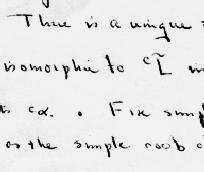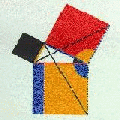| Digital Mathematics Archive | ||

|

|
|
|
The Digital Mathematics Archive is a digital collection of mathematical sources, with a primary focus on documents from the late 19th century through today. Papers, letters, manuscripts, e-mail messages, Usenet-news postings, computer rendered images and computations, program source code... many of today's source documents are much more ephemeral than the documents of the previous century. This archive will allow some of this material to be preserved and will give it as wide a distribution as possible.  Selected Mathematical Work of Robert Langlands
Selected Mathematical Work of Robert Langlands
This collection presents some of the professional correspondence of Robert P. Langlands, as well as a selection of previously unpublished work, and published work now out of print. One of the first documents in this collection is a 17 page hand-written letter to Andre Weil, written while Langlands was at Princeton University, outlining what quickly became known as `the Langlands conjectures'. We present large-format digitized images of the original letters together with .dvi and .pdf format transcriptions.  Oliver Byrne's edition of Euclid's Elements
Oliver Byrne's edition of Euclid's Elements
``One of the oddest and most beautiful books of the century'', a book published by ``the foremost name in Victorian book design and synonomous with good typography and printing throughout the [Victorian] period'' is being made available on-line as a joint project of the University of British Columbia Library, Special Collections division, and the UBC SunSITE.  Erhard Ratdolt - First publisher of Euclid
Erhard Ratdolt - First publisher of Euclid

We welcome your contributions to this archive. Please contact us with any questions, suggestions, or contributions: Email: sunsite(at)math(dot)ubc(dot)ca |
||
|
Copyright ©1997
The University of British Columbia Mathematics Department Individual pages and projects are Copyright by their respective creators, as noted. These sites are hosted at SunSITE.UBC.CA, which is sponsored by a grant from Sun Microsystems, Inc. It is partially supported by a grant from the Pacific Institute for the Mathematical Sciences. |

|